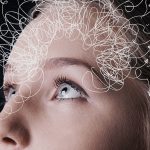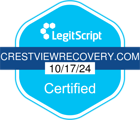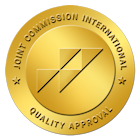Dealing with mental health and substance use issues can be confusing and isolating. These challenges often don’t exist on their own; they tend to overlap, making things more complicated. This overlap is called dual diagnosis, or co-occurring disorders (COD).
To better support and recover from these struggles, it’s important to understand what a dual diagnosis means, what forms it can take, and how to spot the symptoms of these combined conditions.
At its core, dual diagnosis refers to the presence of a mental health disorder and a substance use disorder in the same individual. It’s not simply about someone who experiences anxiety and also occasionally drinks alcohol. Instead, it signifies a more profound and often complex interplay between these two conditions, where one can exacerbate the other. This can make diagnosis and treatment significantly more challenging.
The prevalence of dual diagnosis is higher than many realize. Studies show individuals with mental health disorders often develop substance use disorders. This connection highlights the importance of understanding various dual diagnosis examples and learning how to treat both conditions together in one approach.
Why Do Co-Occurring Disorders Happen?
The connection between mental health and substance use disorders is complex, with several factors contributing to their co-occurrence:
Genetics, brain chemistry, trauma, stress, and environmental factors can increase the risk of both mental illness and addiction. A family history of either condition, brain imbalances, and past trauma can all make individuals more susceptible to developing both mental health and substance use disorders.
People with mental health issues may turn to substances to cope with symptoms of conditions like anxiety disorders or clinical depression. While it might offer temporary relief, this often leads to dependence on substances and exacerbates the underlying condition, creating a dangerous cycle.
Heavy substance use can alter brain chemistry, potentially triggering or worsening mental health problems such as anxiety, depression, or psychosis. These mental health challenges can persist even after the individual stops using the substance.
Mental health and substance use disorders share similar symptoms, including sleep disturbances, appetite changes, and social withdrawal. This overlap makes it difficult to differentiate between the two, which can complicate diagnosis and treatment.
Examples of Co-Occurrence as Dual Diagnosis

Dual diagnosis is not a monolithic entity. It encompasses a wide range of combinations of mental health and substance use disorders. Understanding some common examples can help shed light on the diverse ways these conditions can manifest:
Individuals with anxiety disorders (such as generalized anxiety disorder, social anxiety disorder, or panic disorder) may use alcohol to cope with the persistent feelings of worry, fear, or unease. While this may offer temporary relief, it can lead to the development of alcohol use disorder over time.
Chronic alcohol consumption can actually worsen existing anxiety symptoms or even contribute to the onset of an anxiety disorder. This pattern can increase the risk of panic attacks and make alcohol withdrawal symptoms (such as anxiety, tremors, and insomnia) more severe. Many individuals may struggle to navigate social situations without alcohol.
Depression disorders, marked by persistent sadness, low energy, and loss of interest, can lead some individuals to use opioids for temporary relief. However, a pattern of chronic opioid use often results in dependence. This can worsen depressive symptoms by disrupting the brain’s natural reward system.
Those with co-occurring depression and opioid use disorder may feel hopeless, unmotivated, and emotionally numb, while also experiencing a compulsive need to use opioids. Withdrawal can intensify symptoms like depression, anxiety, and physical discomfort. Even when not using, many may struggle to feel pleasure, which can contribute to social withdrawal and isolation.
Bipolar disorder is characterized by extreme mood shifts between manic and depressive episodes. Individuals may turn to stimulants such as cocaine or methamphetamine to boost energy during depression or intensify euphoria during mania. However, stimulant use can further destabilize mood and worsen the course of the disorder.
Signs of co-occurring bipolar disorder and stimulant use can include alternating periods of mania or hypomania and depression alongside drug use. Increased impulsivity and risky behaviors are common during manic episodes and stimulant intoxication. Even during abstinence, mood regulation can remain difficult. Stimulant use may also intensify psychotic symptoms (such as delusions or hallucinations) which can occur during manic phases.
Schizophrenia is a severe mental illness marked by hallucinations, delusions, and disorganized thinking. Some individuals may use cannabis to cope with anxiety, sleep issues, or other negative schizophrenia symptoms such as social withdrawal. However, cannabis use (particularly high-potency strains or use during adolescence) is linked to a higher risk of psychosis and can worsen symptoms in those with schizophrenia.
In cases of co-occurrence, individuals may show ongoing cannabis use alongside their psychotic symptoms. While cannabis may offer short-term relief, it can also intensify hallucinations and delusions, hinder adherence to antipsychotic medication, and contribute to greater social isolation.
People with Attention-Deficit/Hyperactivity Disorder (ADHD), which is characterized by inattention, hyperactivity, and impulsivity have higher rates of nicotine use than the average person. They may do so to self-medicate, because they subconsciously seek improved focus and reduced restlessness.
While nicotine can offer short-term relief from ADHD symptoms, it is highly addictive and carries serious health risks. Nicotine withdrawal can lead to irritability, poor concentration, and heightened anxiety. The combination of dependence and persistent ADHD symptoms can make quitting especially difficult.
Post-Traumatic Stress Disorder (PTSD) and Benzodiazepine Abuse
Many people with Post-Traumatic Stress Disorder (PTSD) turn to benzodiazepines (such as Xanax, Valium, or Klonopin) to manage anxiety, panic, and sleep issues. While these drugs can offer short-term relief, long-term use often leads to dependence. Over time, they can block emotional processing, dull memories, and make therapy less effective. Instead of helping with recovery, they may keep the person stuck in a cycle of avoidance and emotional numbness.
Withdrawal from benzodiazepine can be intense, causing panic, insomnia, and seizures in severe cases. For someone with PTSD, this may feel like reliving their trauma. Continued use may offer a false sense of control but prevent the real healing. Recovery involves safely reducing dependence on benzodiazepines while addressing the trauma through proper therapy and support.
Treatment Approaches for Dual Diagnosis
Addressing dual diagnosis requires an integrated treatment plan that simultaneously targets both the mental health disorder and the substance use disorder. Strategies may include:
Cognitive Behavioral Therapy (CBT) helps address both mental health disorders (e.g., depression, anxiety) and substance use issues. It is based in teaching the individual to identify and modify harmful thought patterns, behaviors, and beliefs. This concurrent treatment ensures that all conditions the person is experiencing are treated together.
Medications like antidepressants or antipsychotics stabilize mental health symptoms, while substances like methadone or buprenorphine can help manage withdrawal symptoms and cravings. A tailored medication plan supports stability and allows the person to focus on treatment.
Group therapy and support networks, such as 12-step programs, provide a sense of community and shared experiences. They can also offer comfort, motivation, and coping strategies for individuals facing dual diagnosis.
Holistic therapies like meditation, exercise, and balanced nutrition promote overall well-being, reducing anxiety, improving emotional stability, and supporting physical health. This can aid in preventing relapses and enhancing recovery.
Inpatient programs offer 24/7 care in a controlled setting for severe symptoms, while outpatient programs provide flexible treatment for those with less severe issues or those transitioning from inpatient care. Both types of programs focus on addressing both mental health and substance use disorders simultaneously.
The Importance of Dual Diagnosis Treatment
 When someone faces both mental illness and addiction, the challenges can feel overwhelming. Thankfully, there are treatment options specifically designed for individuals with a dual diagnosis. These programs provide integrated care for both conditions simultaneously, offering a more holistic and practical approach to recovery.
When someone faces both mental illness and addiction, the challenges can feel overwhelming. Thankfully, there are treatment options specifically designed for individuals with a dual diagnosis. These programs provide integrated care for both conditions simultaneously, offering a more holistic and practical approach to recovery.
Dual diagnosis treatment is crucial as it addresses the complex link between mental illness and addiction. Treating both disorders simultaneously improves recovery chances and provides comprehensive healing. This integrated approach ensures that no aspect of the individual’s struggle is overlooked, which supports long-term recovery.
Embracing Hope and Recovery
Living with a dual diagnosis can present significant challenges, but it’s crucial to remember that recovery is possible. At Crestview Recovery in Portland, Oregon, individuals facing co-occurring disorders receive integrated treatment designed to support their unique needs. We offer personalized care and evidence-based therapies in a compassionate environment. Contact us today to discover how we can help you overcome dual diagnosis challenges and start your recovery journey.
































